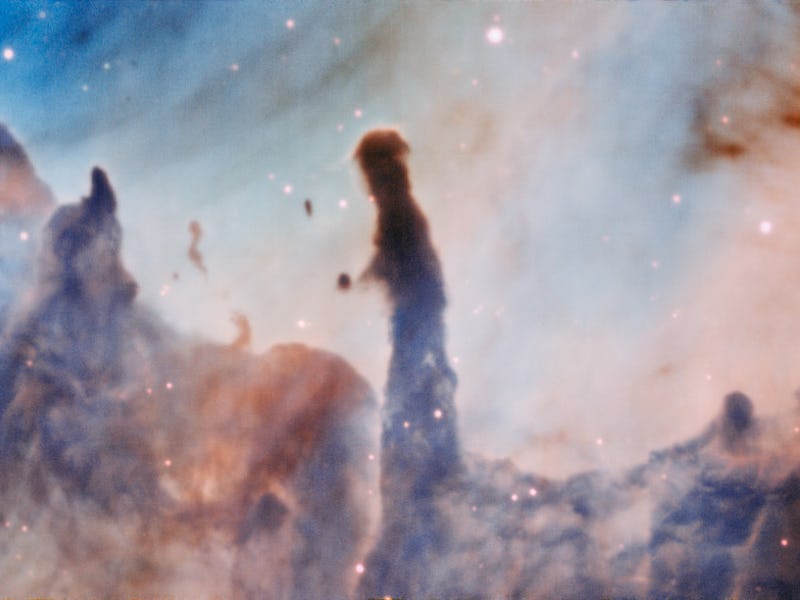Cosmic Destruction Birthed These "Pillars of Death" in Space
New images taken by astronomers show off these beautiful celestial structures.

Out in the darkness of space burns the brightest nebula in the sky, the Carina Nebula. Within this structure, an estimated 7,000 to 10,000 light years from Earth, the birth of stars and the destruction of the clouds from which they are born results in spectacular pillar-like columns of dust and gas. These are the “Pillars of Destruction,” and we can see them in greater detail than ever before by the European Southern Observatory (ESO).
These pillar-like celestial plumes differ from the iconic “Pillars of Creation” because their existence stems specifically from this cloud destruction, rather than the birth of stars. When the cloud is incinerated, the new stars blast out ionizing radiation capable of stripping atoms of their orbiting electrons. As this energetic radiation interacts with dust and gas, it becomes ionized and disperses — which then causes the pillars to lose their mass. Scientists don’t yet fully understand how long these pillars are stable after they result from this cloud-star interaction — but there’s no question they look pretty rad.
Several pillars within the Carina Nebula.
To capture these images an ESO team, led by Anna McLead, used the MUSE instrument on the Very Large Telescope. The instrument, which the ESO describes as “looking like a machine straight out of the movie The Matrix,” took thousands of images of the nebula at the same time. Each of these were taken at a different wavelength of light, an essential component that allowed the astronomers to map and analyze the pillar’s chemical and physical properties.
After examining the images, the research team thinks radiation and stellar winds likely created the denser spots within the pillars. They’ll continue to transform until they eventually form stars, continuing the cycle of creation and destruction.